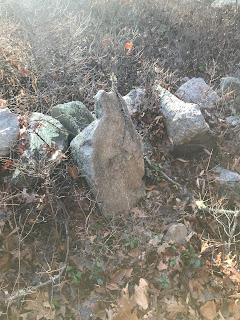I know some of my readers think the author is too far out but I am sort-of rooting for the guy. He sends the following:
Recently published is my last comprehensive book on Native American history, the Native American Encyclopedia of Georgia. It is the result of 16 years of research and learning how to translate 28 different languages. Through linguistics, it proves that peoples from several parts of the Americas, Ireland, Scotland, Sweden and Iberia settled in Georgia - particularly in the gold-mining region - then mixed to become the Creek Indians. Henceforth, most of my energies will be put into the study of individual archaeological sites and the output will be animated films, showing what these towns looked like when occupied. I have recently obtained state-of-the-art virtual reality software from France (Artlantis) plus professional quality video and acoustical software from companies in the United States.
Coming in 2021 is an annotated transliteration of Cherokee Principal Chief Hicks' History of the Cherokee People. Handwritten in 1826, Chief Charles Hicks planned for it to be printed by the Cherokee Phoenix, but he died in January 1827. For unknown reasons, Phoenix editor, Elias Boudinot never got around to printing it. The original manuscript was stolen last year, so this book will be the only public source.
In the past two years, my archaeological research has absolutely proven that during the Bronze Age, bands of people from northwestern Europe settled in the Georgia Gold Belt. I am documenting their town sites right now. The Itza and Soque Maya colonists built mounds and towns on top of the earlier European settlements.
I will be on the cast of a History Channel documentary to be broadcast in 2021. It was filmed in late October. Lost Worlds documents my discovery of a large Maya-like town in the northern corner of this county. Its founders were the Soque from southern Mexico, who were first associated with the Olmec Civilization before associating with the Maya Civilization .
Wishing you the best in the coming year, despite this terrible pandemic. Like a lot of other people in the Nacoochee Valley, I had Covid19 last December.
Sincerely yours,
Richard Thornton

















































